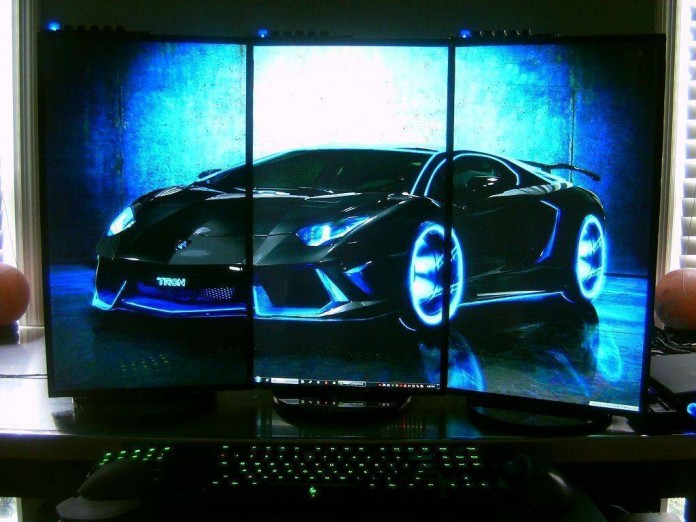This week on Breaking It Down, I’m talking about the difference between using a normal TV and an actual PC gaming monitor when playing video games. The difference is enormous. If your jaw drops while looking at “BioShock Infinite” through an XBOX connected by AV component cables to a standard TV, then you’re in for a shock. Taking the best TV possible and using an HDMI cable to hook up your device still doesn’t compare to the graphical difference in one of the lower end PC monitors. Of course, PC monitors, especially ones meant for gaming, are pricier then regular TV monitors or even the standard PC monitor. I was one of those people who once thought that spending 200 dollars on an average PC monitor not meant for gaming would be just as good as spending 500 dollars on a high end gaming monitor. I was mistaken.
My first ever monitor I used to play video games with was a Sylvania 17 inch TV. I bought it from Walmart for about 80 dollars and I thought it was the greatest thing ever. I was amazed by the picture quality of the games I was playing. I used standard component cables to play so my max output was 480p. If you’ve ever watched a YouTube video, then you know the differences between 480p, 720p, and 1080p are pretty substantial. I still have this TV to date. I use it as my 3rd monitor for my PC because I can’t afford three 500 dollar monitors. My second monitor was an HP Pavilion 23xi. It outputs in 1920x1080p, has a refresh rate of 60Hz, and a response time of 7ms. The difference between my old Sylvania TV and my HP monitor is incredible. I could see things much more clearly, even in the character’s POV. I was astonished at how much of a difference it made. I spent about 200 dollars on this monitor. The most recent monitor I bought is a BenQ Gaming XL2720Z 27″ gaming monitor. It has a 1ms response time and a 144Hz refresh rate. The only reason I bought this monitor was because I was getting back into competitive Call Of Duty and I was at a disadvantage with any other monitor. Let me tell you, this was the best 550 dollars I ever spent. This monitor is amazing. It makes any game look good. My skills in Call Of Duty became much better because I could see other players from much farther away and, in turn, was able to initiate and win more gun fights.

If you’re a console player that is noncompetitive, then you don’t need any more than my second monitor, the HP Pavilion 23xi. That might actually be a bit overkill for what you are doing. As long as you’re using an HDMI cable, any monitor you use that has a capable output of 1920x1080p will look about the same in most, if not all, games. The real difference is in PC gaming. This is where the response time and refresh rates I’ve been talking about really make a difference. Response time is the time it takes for the monitor to react to the input you do. So moving your mouse around on a 1ms display will take 1ms for the monitor to display this action. The difference between 1ms and 5ms isn’t noticeable by the human eye, but there is a huge difference between the two when gaming. Refresh rate is how many times the monitor refreshes in a second. 60Hz is normally alright for most people. If you’re someone with a very powerful computer and trying to play games at the maximum frame rate possible, then 60Hz is just not good enough. You will start to experience screen tearing because your monitor cannot keep up with the frames per second the game is being output at. Then you have to turn on v-sync, which locks the game out at 60 FPS.
You’ll constantly hear people saying that you will never notice the difference between 1ms and 5ms, or 60 frames per second and 120 frames per second. If you’re computer is strong enough to handle it, the difference is huge. Each game performs better and becomes much more enjoyable. Of course, you have to think to yourself and ask if having a superior gaming experience is worth the extra 300 dollars. For most people, it’s really not because they don’t even have a strong enough computer to be able to notice the difference. If you have one, you’re really not getting the most out of your 1,000+ dollar computer if you cheap out on the monitor. I recommend going with one of the cheaper monitors first. If you notice that you have to turn v-sync on for every game you play because your monitor can’t keep up, or you’re unhappy with the quality of the game, then upgrade and get one of the higher end monitors, if you have enough money. In the end, there are a lot of factors that go into which monitor you buy, and a lot of it is personal preference. If you game a lot on PC, the best monitor you can afford is normally the one you should go with.
Until next time Uzers – Mike
Featured image courtesy of bestgamingmonitorden.com
